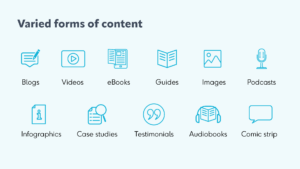
Historically, the majority of healthcare services and products have been available to the general public offline, but as the world has become increasingly digital, so has our approach to healthcare. In the ‘digital age’ almost 83% of patients look to the internet to help them search for medical and healthcare providers. With a rapid move to the online space, many healthcare brands might look to take digital marketing ‘pointers’ from some of the more successful online industries, and follow the traditional ‘blueprint’ for a marketing strategy; while this might seem like a way to quickly build a successful digital marketing strategy – this is not the case.
Healthcare brands have to take a different digital marketing approach to other industries due to the unique marketing regulations and standards the industry needs to uphold, as well as some unique ethical challenges that other industries do not face.

Health Benefit Consultants, Share Your Expert Insights in Our Survey
Sian Badich Sian Badich is a Senior Marketing Executive at ClickConsult, a digital marketing agency that has built successful digital marketing strategies for a wealth of health and wellness brands. At ClickConsult, Sian works alongside a team of expert marketers with experience spanning several decades. Sian is an expert writer and storyteller, and has created […]
Customer trust is important – but in healthcare it is vital
In some industries consumers are willing to make a ‘risky’ purchase because if the product is not what they expected it generally does not impact their wellbeing; whereas for healthcare brands, products and services are directly related to wellbeing, and consumers are therefore highly unlikely to purchase from a brand they do not trust.
The best way to build customer trust online is to ensure your website and content meet EEAT requirements. EEAT is a digital marketing term used to evaluate online content against how it demonstrates Experience, Expertise, Authority, and Trustworthiness. A strong content marketing strategy that delivers a wealth of high quality content pieces and demonstrates your knowledge and expertise within the field is key to this.
Healthcare brands can struggle with EEAT by using too many long-form content pieces full of technical jargon; there is certainly a place for this type of content in your marketing, particularly in the medical and healthcare industry since the use of technical language demonstrates your expertise and authority. The problem lies with jargon getting in the way of potential consumers understanding your products and the benefits they provide – discouraging them from making a purchase. Instead, alongside the ‘expertise-building’ long-form content, try to create a variety of other content pieces that use minimal jargon – or where, if necessary for context, jargon is clearly defined for educational purposes and to increase understanding. 

A Deep-dive Into Specialty Pharma
A specialty drug is a class of prescription medications used to treat complex, chronic or rare medical conditions. Although this classification was originally intended to define the treatment of rare, also termed “orphan” diseases, affecting fewer than 200,000 people in the US, more recently, specialty drugs have emerged as the cornerstone of treatment for chronic and complex diseases such as cancer, autoimmune conditions, diabetes, hepatitis C, and HIV/AIDS.
Different forms of content you can use in your digital marketing strategy to captivate the attention of a wider audience.
Healthcare is an extremely personal and individual experience – no two people have the exact same medical history. Despite the personal nature, healthcare providers often overlook this when it comes to the marketing practices. Yet, 92% of healthcare providers are aware that their customers expect personalized experiences.
Content such as case studies, testimonials, and success stories are a great way to allow your audience to visualize themselves within the narrative of your brand. People relate to people, and showing your target audience that your customer base contains people ‘just-like-them’ subtly hints that your product or service is something that would benefit them too.
That being said, due to the individual nature of healthcare success stories might not be relevant to everyone. You do not want to mislead your audience or potential customers by sharing unattainable results – this could have the opposite effect on your reputation, consequently having a detrimental impact on customer trust. Keep this in mind and be clear on expectations when marketing in healthcare.
How to play by the rules and still be on top (of the SERPs)
The top three Google search results get 54.4% of all clicks. While every industry – from healthcare to eCommerce – strives to rank as highly as possible on the SERPs, healthcare faces particular challenges, especially in relation to paid media and advertising.
There are two main strategies that marketers use to increase their visibility on SERPs: optimizing their content for organic search (SEO), or through paid media (PPC). Search Engine Optimization (SEO) is when elements are strategically placed in your content to notify search engines that your content is helpful, interesting, and relevant to humans looking at particular search queries, increasing the likelihood that they will rank higher on search engines.
The more complicated strategy – at least where healthcare brands are concerned – is paid media. Like with SEO, paid media increases the likelihood that your webpages will appear on the first page of search results, however it will appear as ‘sponsored’ or ‘ad’ content. This involves using a keyword strategy to bid on certain keywords against your competitors, and (depending on a variety of factors) the winning bid will appear on the search results page.
The reason PPC is more complicated for healthcare compared to other industries is because there are a stricter set of regulations in place within this industry, dictating the ways in which products are allowed to be advertised – including not allowing certain products to be advertised at all. These restrictions vary per healthcare subsector, as well as per country so it is essential you read up on these guidelines depending on your circumstances. With this in mind, when thinking about advertising in healthcare, also consider focusing on people over products, ensure all wording is ethical and checked over by a legal expert or industry bodies such as the PAGB, and make sure any claims you make can be backed up by evidence.
This is not the only hurdle healthcare brands have to consider with paid media advertisements; once the restrictions have been considered and accounted for, there are other minor challenges healthcare brands face, for example the inability to use a medical condition as a filter for ‘targeted’ ads. There are a few ways to navigate this problem:
- Narrowing demographics: there are usually certain demographics that are more susceptible to certain medical conditions or diagnoses. For example if the medical condition only affects men, you are able to narrow the advertising parameters to only target men. By doing this you are increasing the likelihood that the person seeing your ad will be in need of your products or services, increasing the chances of gaining new custom.
- Remarketing: through website tracking, you are able to follow a customer journey on your website – and later display advertisements to them based on the products or services they interacted with on your site. This is known as remarketing (or retargeting).
- Keywords: although you cannot filter your target audience by medical condition, you can choose to use certain medical conditions or diagnoses – or words and phrases associated with them in your keyword strategy. For example if you were advertising iron supplements for people with anaemia you could use the target keyphrases “iron supplements for anaemia”, “anaemia supplements”, “iron supplements”, “tablets for anaemia”, “iron tablets”.
Constructing digital marketing strategies for healthcare
For the safety of ourselves, and others, the medical and healthcare industry is governed by strict rules and regulations – as it should be – but these regulations do have an impact on digital marketing practices in the industry. When taking the above into consideration, healthcare brands should always build their own digital marketing strategy from scratch – rather than using a blueprint from another successful digital industry. When these restrictions and ethical standards are accounted for, there is substantial potential for healthcare brands to build highly successful digital marketing campaigns.
Photo: Dilok Klaisataporn, Getty Images
Sian Badich is a Senior Marketing Executive at ClickConsult, a digital marketing agency that has built successful digital marketing strategies for a wealth of health and wellness brands. At ClickConsult, Sian works alongside a team of expert marketers with experience spanning several decades. Sian is an expert writer and storyteller, and has created high-quality content for a multitude of successful marketing campaigns. Sian’s talents include writing content primed for organic search (SEO), and creating captivating ad copy that has been used in several highly successful paid media campaigns (PPC), as well as many other copywriting capabilities and triumphs. Using her expertise, Sian is able to manage projects and campaigns that deliver results and drive brand awareness and growth.











